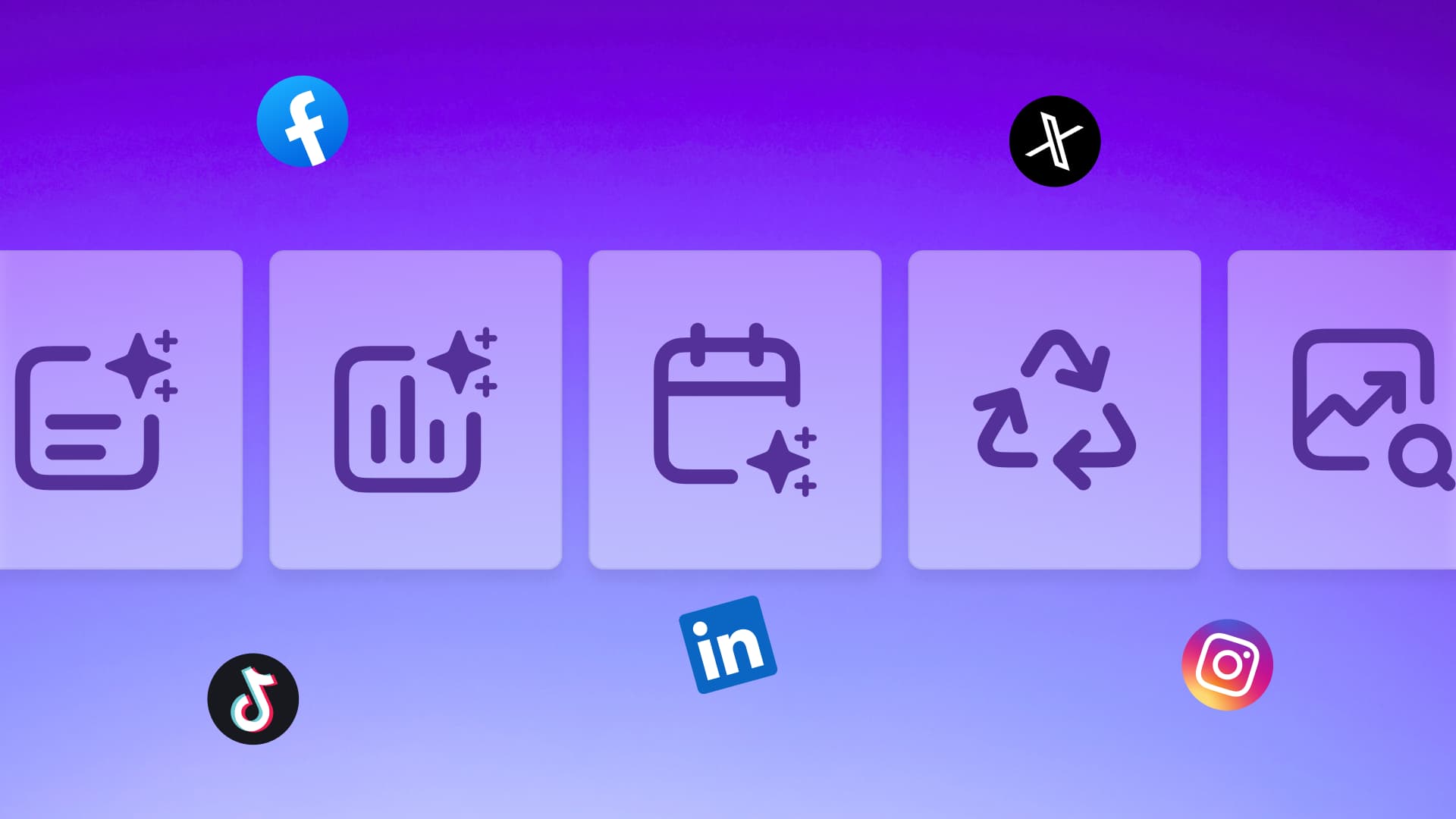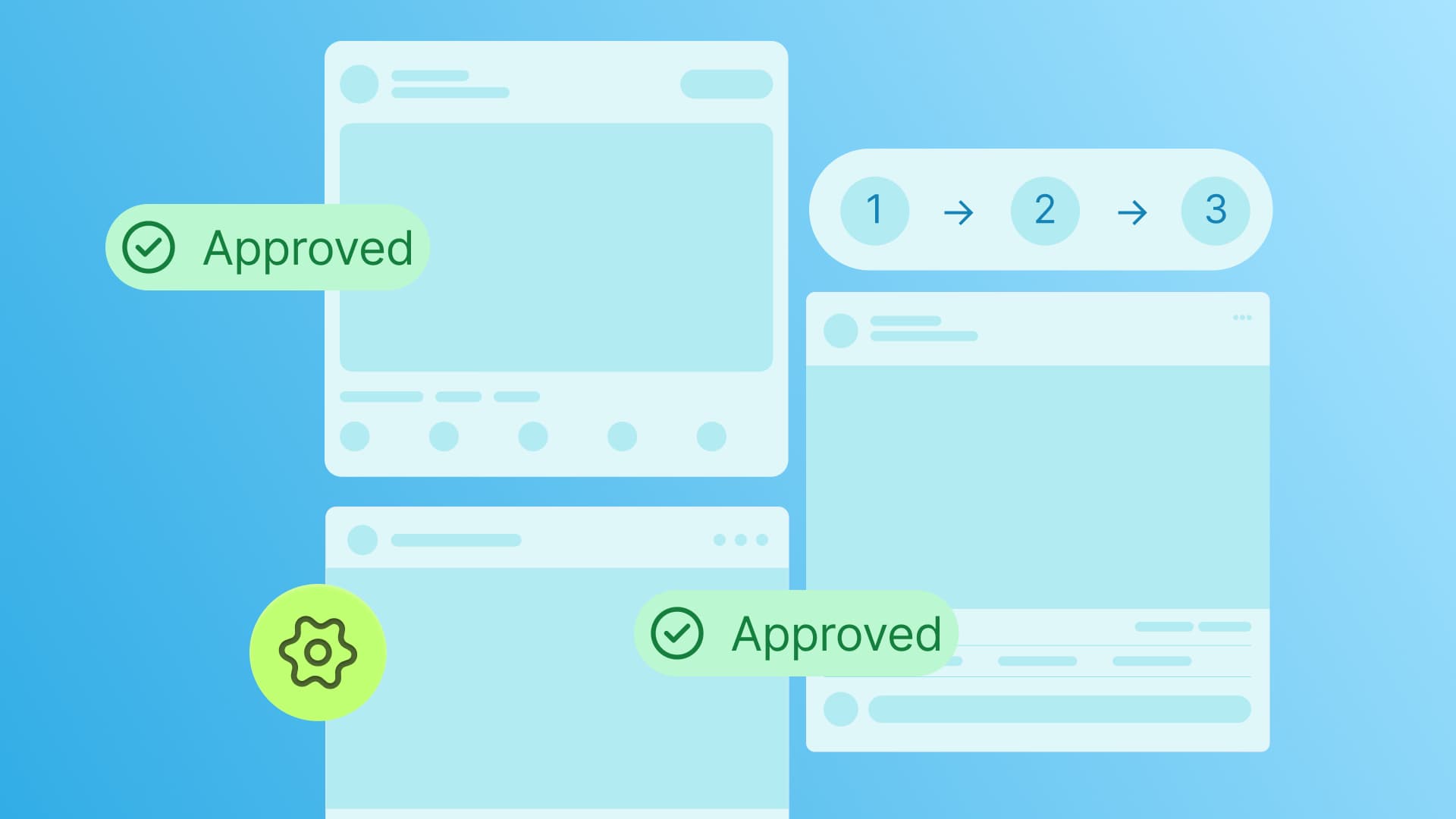New
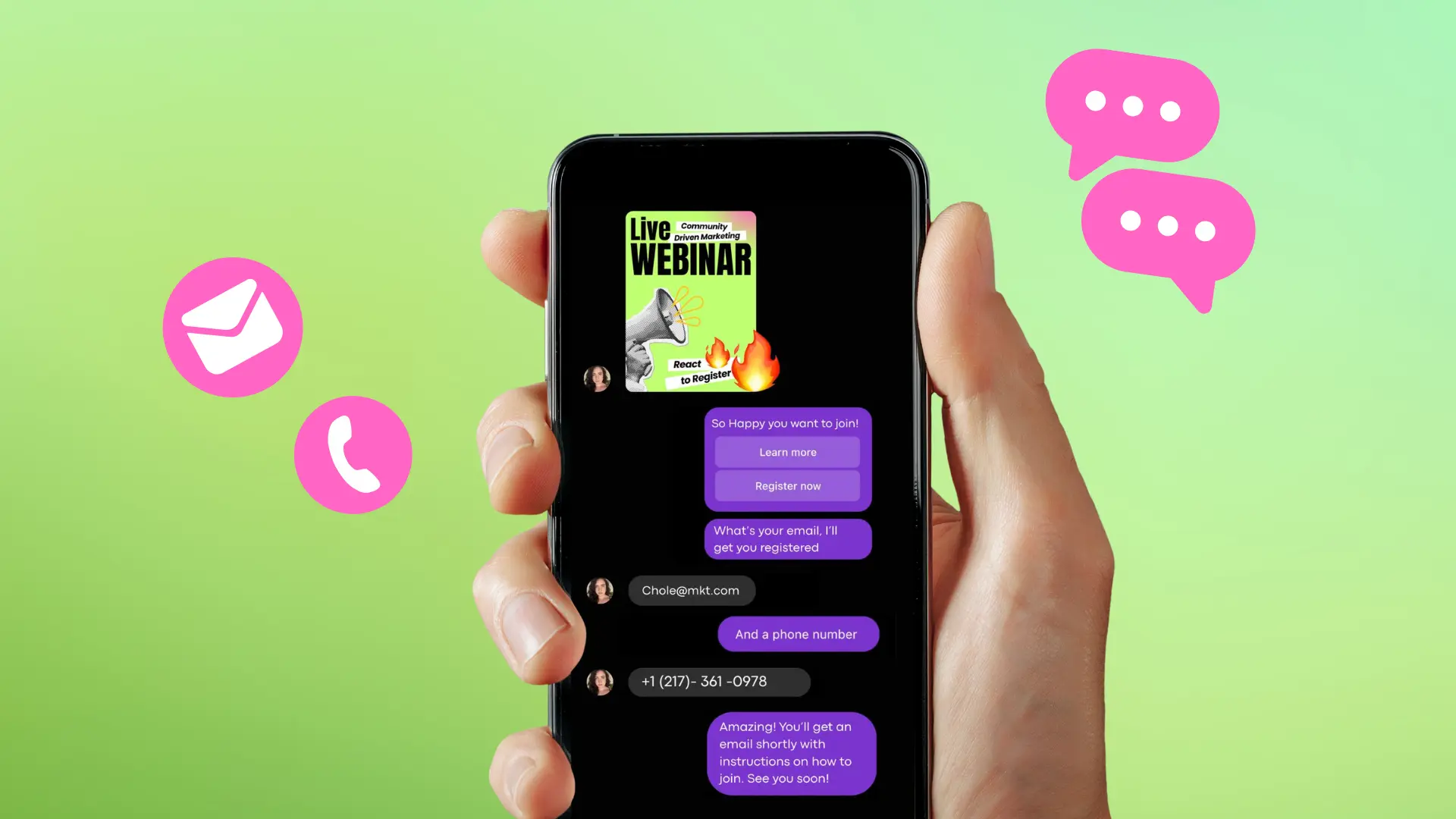
Turn Your DMs Into Lead Gen!
Learn how to collect lead data from your DMs such as email addresses, phone numbers, and more right from your social inbox. If you are not yet automating your DMs your competitors are outpacing you.

How Something Social Saved 75% of Their Time and Increased Revenue by 15%
See how a fast-growing agency improved operations, cut down hours of manual work, and unlocked new revenue opportunities with Vista Social.
New
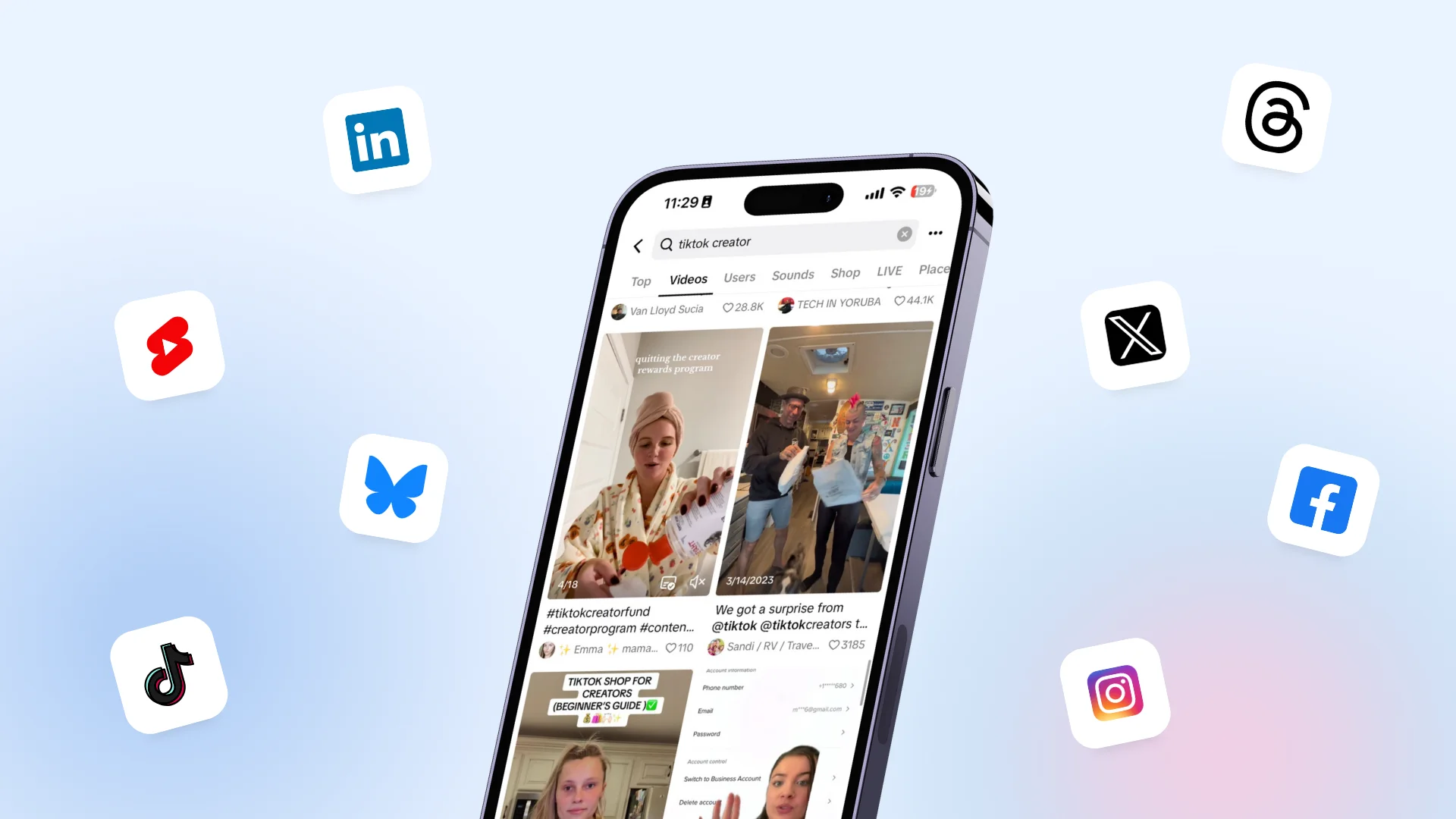
50 Unique Social Media Ideas for Consistent Content Creation
Discover 50 unique social media post ideas to engage your audience, grow your brand, and maintain a consistent content strategy with ease!
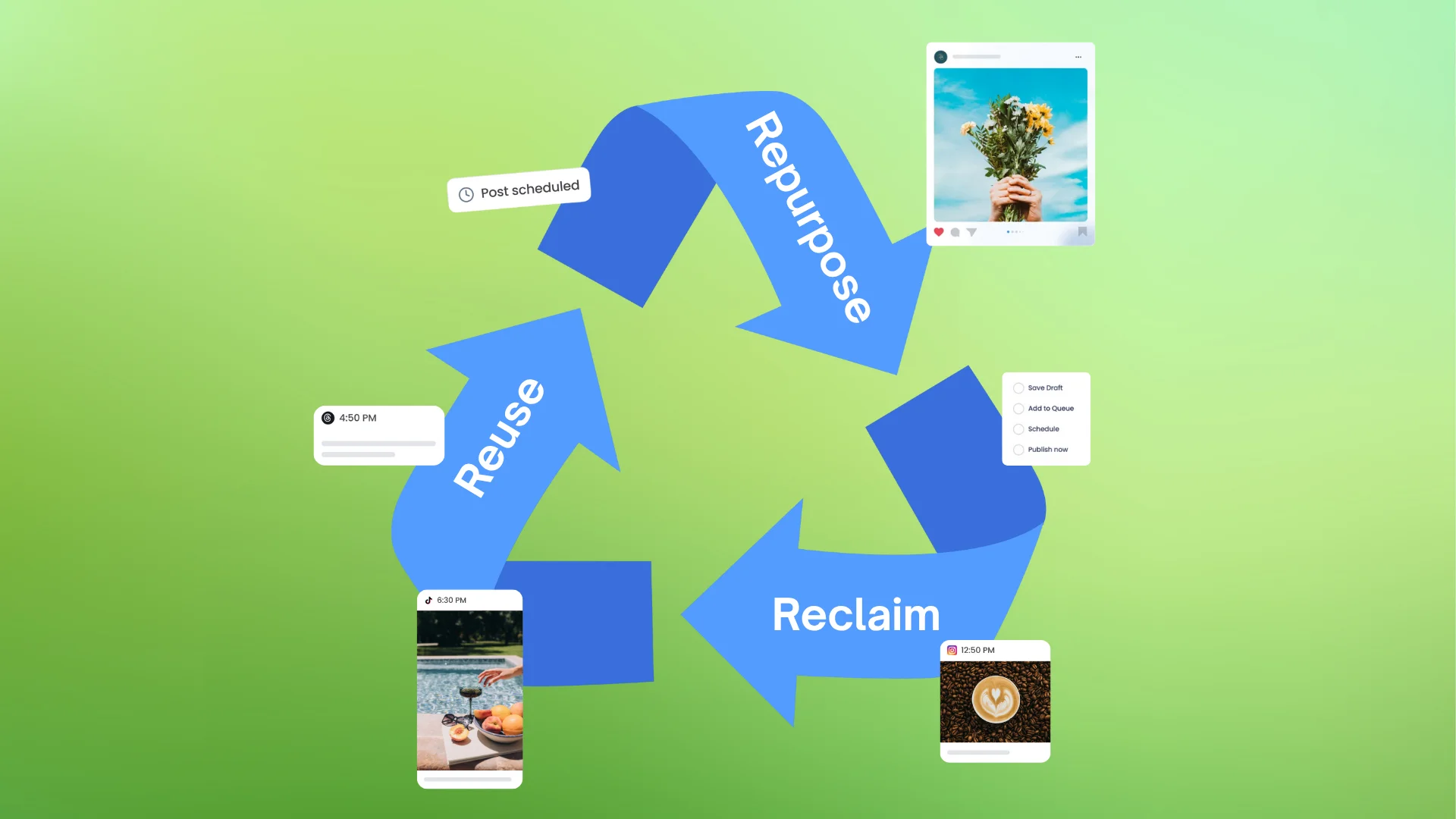
Mastering Content Reuse: The Key to a Consistent and Sustainable Posting Strategy
Published on September 1, 2023
11 min to read
How the YouTube Shorts Algorithm Works [2025]: w/ Tips & FAQs
Summarize with AI
![How the YouTube Shorts Algorithm Works [2025]: w/ Tips & FAQs How the YouTube Shorts Algorithm Works [2025]: w/ Tips & FAQs](https://dc4ifv9abstiv.cloudfront.net/blog/2023/08/BLOG_IMAGES-1.jpg?v=1766502103429)

Table of Content

Want to know the secret behind how the YouTube Shorts algorithm works?
We got you, fam. 😎
Since you’ve been frequenting YouTube, you’ve seen the short videos that appear as you scroll down.
Don’t see them?
Maybe because they’re, …drum roll, please… short. 😂
Kidding aside, YouTube Shorts are bite-sized, 60-second videos that give your clients’ viewers quick, entertaining, informational, and interesting content.
The YouTube Shorts algorithm decides which videos are worthy to get the top spot in a user’s Shorts video lineup.
So, how do YouTube Shorts recommendations work exactly, and how can you win the algorithm over to help your clients’ videos appear right in front of their target audiences?
Find out the nitty-gritty of the YouTube Shorts Algorithm, including tips to “hack” it and get it on your client’s side below.
Table of contents
What you’ll learn:
- What is the YouTube Shorts algorithm?
- YouTube Shorts algorithm: How it works
- 7 Tips to optimize YouTube Shorts videos
- Publish YouTube Shorts effortlessly
- People also ask
- Get on the YouTube Shorts algorithm’s good side
What is the YouTube Shorts algorithm?
The YouTube Shorts algorithm is the system, process, or rules that work behind the scenes to determine the Shorts viewers see on their feeds.
In technical terms, the algorithm is a set of instructions coded into YouTube (specifically for Shorts) to configure a system that decides which Shorts videos the platform shows users.
Put simply, the algorithm is designed to match YouTube users with the content (Shorts) it thinks the viewers want to watch.
YouTube Shorts algorithm: How it works
Here’s a truth bomb: No one, except the people who work for YouTube, can know everything about how the Shorts algorithm works.
But here’s what we know: The YouTube algorithm uses signals like content topics and user behavior to guess which short videos users want to see.
You and your clients need to understand the signals that make the YouTube Shorts algorithm work since it helps them tailor their videos to target audiences.
Check out the top signals your clients should know to help them create “algorithm-friendly” YouTube Shorts.
Watch history
Long story short (pun intended), what short videos users watch on the platform influence the content the algorithm shows in the YouTube Shorts feed.
Remember, YouTube wants to keep users watching videos, so the Shorts algorithm serves viewers content that they like and keeps them hooked.
Obviously, your clients don’t have control over any user’s watch history.
Your clients’ best bet?
Create YouTube Shorts that attract viewers so your clients’ videos become a part of the target audiences’ watch history.
The goal is for the algorithm to take notice and show your clients’ videos to their target viewers.
Viewed vs swiped away
Want to know if your clients’ videos are engaging audiences?
Take a good look at their viewed vs. swiped away metric.
The metric figures out the percentage of times viewers watched your clients’ Shorts instead of scrolling away.
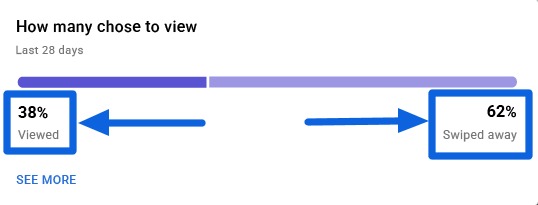
Image source: support.google.com.
It’s a good indicator of whether your clients’ Shorts drew “Woohoos!” and not “Boos.”
The YouTube Shorts algorithm factors in this metric to determine how much your clients’ audiences enjoyed their content.
Reel your clients’ viewers within the first few seconds of the video.
A great hook and a punchy introduction can go a long way in drawing your clients’ viewers in, enticing them to watch until the end and comment on, like, and share the Shorts.
Throw in amazing visuals, and your clients will have a hard time keeping viewers away, prompting the algorithm to show the videos to more users’ Shorts feeds.
Engagement
Engagement covers shares, comments, watch times, and likes.
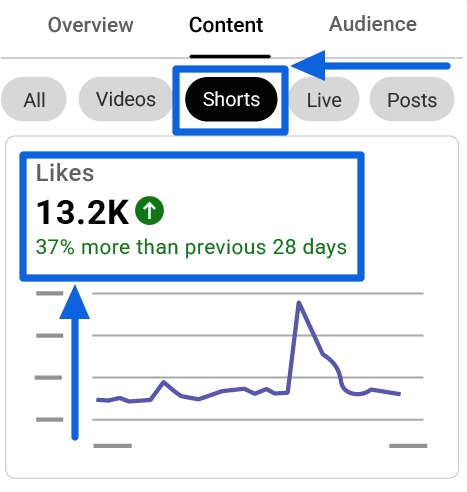
Image source: support.google.com.
The higher the engagement on your clients’ YouTube Shorts, the more chances of the algorithm getting your clients’ videos to the top spots on users’ Shorts feeds.
Before you go into boosting your clients’ YouTube Shorts engagement, know that the algorithm focuses more on the watch history and viewed vs. swiped away signals.
Drop the tunnel vision and avoid only creating Shorts for the sole purpose of helping your clients get more engagement.
Put time and energy into great content that entices viewers to rewatch videos on or subscribe to your clients’ YouTube channels.
Help your clients create content that their viewers can enjoy and get value from instead of throwing in all the bells and whistles just to get comments, likes, and shares.
Trust us. Your clients will be in better standing with the YouTube Shorts algorithm by providing viewers with genuine, relevant, and enjoyable content.
Similar videos
The YouTube Shorts algorithm displays content similar to the videos that users previously interacted with.
Like the watch history, the algorithm gets clues from the videos viewers watched before and displays Shorts with related content.
Relevance
It goes without saying that your clients’ Shorts should be relevant to their target audiences.
After all, your clients shouldn’t suddenly veer off to content about cryptocurrency if their channel focuses on food and travel.
That will only confuse and alienate viewers and won’t get your clients brownie points with the YouTube Shorts algorithm.
It doesn’t mean your clients should create the same old content.
Instead, help your clients vary their Shorts and videos while staying on brand and under the same overarching theme.
Your clients can also include content based on recent events, trends, and theories. Just make sure they don’t get too crazy with their theories.
Consider spicing up your clients’ videos but stick to their niche to keep their content relevant to their followers and new viewers.
Relevant content is always great since it tells the algorithm that your clients’ videos are valuable to viewers.
7 Tips to optimize YouTube Shorts videos
Here’s the number one rule when developing your clients’ YouTube Shorts: Don’t create content just to “please” the algorithm.
Instead, help your clients create YouTube Shorts with their target audiences in mind.
The algorithm picks up on videos that audiences truly enjoy, so focus on creating Shorts for your client’s target audiences and not the algorithm.
Optimize your clients’ Shorts content with these tips:
1. Weave Shorts into the content strategy
While Shorts can have the same audiences as your clients’ YouTube channel videos, the two can have different content types.
For example, your clients’ long-form YouTube videos could focus on comprehensive tutorials and how-tos, but their Shorts can be about short, funny memes in their niches.
So where do your clients’ long, information-heavy videos and bite-sized, casual Shorts overlap in structure?
A good solution is to weave in your clients’ Shorts content approach with their overall YouTube content strategy.
Doing so helps align your clients’ Shorts and regular YouTube videos while providing their audiences with a more seamless viewing experience.
For instance, your clients could spill the tea about the common mistakes online retailers make with customers through a funny, relatable Shorts video.
They can also publish a more extensive video about the mistakes to avoid as a first-time online retailer.
It’s an excellent way to spark viewer interest while providing a seamless experience on your clients’ YouTube channel.
2. Use CTAs correctly
Calls-to-Action (CTAs) can entice audiences to click that Subscribe button or like your clients’ videos.
But be warned of the dark side of CTAs.
If your clients use CTAs incorrectly, they can cause viewers to swipe away.
The trick is to ensure your clients’ CTAs are not out of place or take attention away from the Shorts’ content.
Relevance is key, so include CTAs in your clients’ Shorts only when adding them to the videos makes sense.
A classic example is Canva’s YouTube Shorts with a “Click the Create Ads that get results to see the full video” CTA.
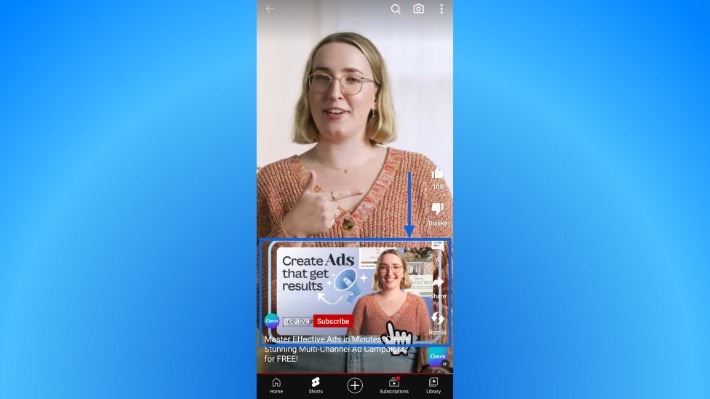
Shorts viewers often look for quick entertainment, so including out-of-place CTAs in front of their faces is a no-go amigo.
It can ruin the viewing experience, increasing your clients’ swipe away and signalling doom and gloom to the YouTube Shorts algorithm.
3. Get in on the latest YouTube trends
Another way to appease the Shorts algorithm is to offer it content with trending YouTube music.
Run your clients’ YouTube Shorts like you would their TikTok feeds.
Slap on trending songs on YouTube Shorts so your clients’ videos have a higher chance of getting picked up by the algorithm.
Try Vista Social for Free
A social media management platform that actually helps you grow with easy-to-use content planning, scheduling, engagement and analytics tools.
Get Started NowFind out what’s bopping on YouTube by tapping the Sound option when creating your client’s Shorts.
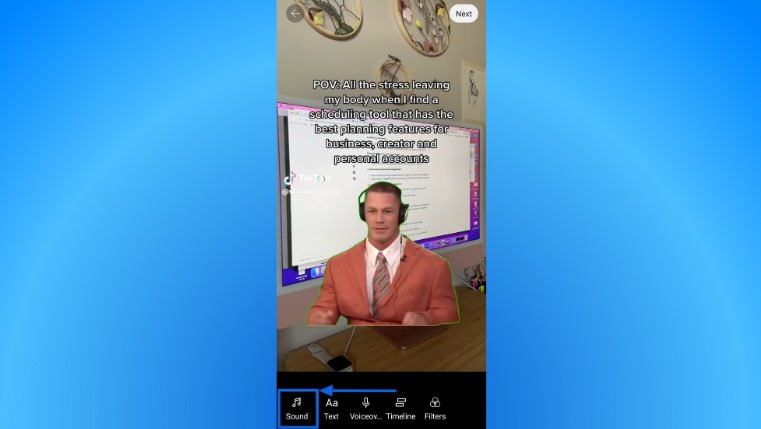
You’ll see the trending music for Shorts under Top sounds.
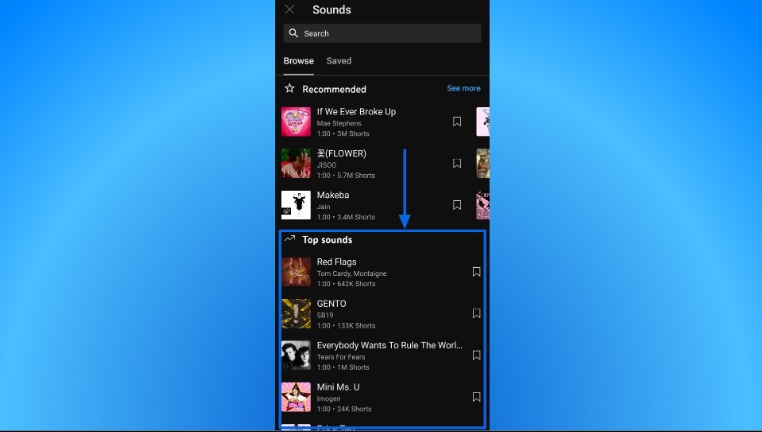
4. Include keywords
Here’s a mindblowing fact: YouTube pulls your clients’ scripts, transcribes them, and crawls them for keywords.
Cool, but what does that mean, and why should your clients care?
Like search engines, it means that YouTube crawls videos, including Shorts, for keywords to determine the content’s relevance.
Shorts that include keywords for a particular video content and topic get deemed relevant by YouTube’s algorithm.
Put simply, adding the right keywords to your clients’ YouTube Shorts increases the chances of the algorithm finding their content relevant and serving them to target audiences and more viewers.
Snatch up this opportunity to include the keywords your clients want to optimize their content for, but don’t overdo it.
Start with one or two keywords and check if the tactic improved results, such as more short-form video content views and YouTube channel subscriptions.
5. Make the first few seconds count
Your clients could publish fantastic Shorts, but if the first few seconds of their videos are a snoozefest, viewers will likely swipe away in a snap.
Ensure your clients’ videos reel in viewers within the first few seconds.
Include a great hook or a fun introduction, create a sense of mystery, and even surprise your clients’ viewers.
Getting viewers hooked within the first few seconds of your clients’ YouTube increases the chances of them watching the videos to the end, which is always a good signal to the algorithm.
6. Use catchy but relevant titles and thumbnails
The algorithm tries to match your clients’ descriptions, titles, and hashtags for YouTube Shorts to user search queries.
So if the Shorts don’t have accurate descriptions, we’ve got bad news for your clients: Their videos won’t likely show up in front of their intended audiences.
Your clients’ Shorts titles don’t have to be super accurate or literal, but they do have to give the algorithm and viewers a clue about the content.
No need to overthink it.
The titles can be simple yet catchy one-liners that give audiences a good idea of what they’re about to watch.
The same general idea applies when adding hashtags and creating your clients’ YouTube Shorts descriptions.
Keep them captivating yet relevant, and sprinkle in trending hashtags and keywords when applicable.
Also, customize the YouTube Shorts thumbnails.
Use thumbnails that draw more eyeballs while still giving an idea about the video’s content— without giving anything away.
As of writing this, changing the Shorts thumbnails is only available when uploading videos through the YouTube mobile app.
On the Add details page, tap the edit icon on the video.
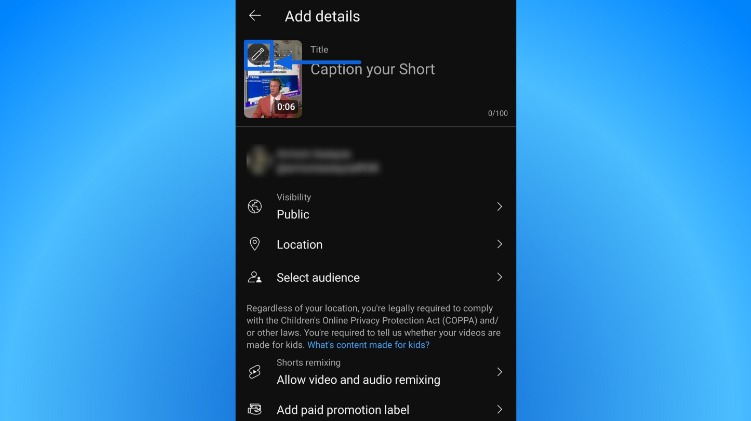
Look through the images and select a thumbnail for your client’s Shorts.
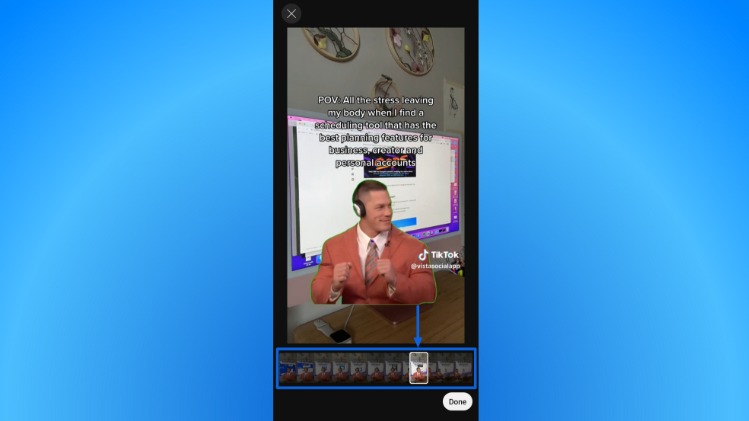
7. Know the best times to post YouTube Shorts
Views usually take place within the first few hours of publishing the Shorts.
Make the most of this by posting your clients’ YouTube Shorts when their target audiences are most active.
It’s a great way to get more eyeballs on your clients’ content, boosting engagement while catching the algorithm’s attention.
While posting times isn’t technically a YouTube Shorts algorithm signal, it’s only practical to put your clients’ videos in front of viewers when they’re most willing to be entertained.
Find the optimal times to post your clients’ Shorts by checking your client’s YouTube Analytics.
Additional tip: Learn how to disable Shorts on YouTube in case you need to help your clients do so.
You can read this How to Disable YouTube Shorts guide.
Publish YouTube Shorts effortlessly
Did you know you can create your clients’ YouTube Shorts and schedule them to publish on autopilot?
Prepare to be mindblown with Vista Social—a modern Social Media Management (SMM) platform with sophisticated features and tools.
Start by connecting your YouTube channel to Vista Social. Go to Add Social Profile, follow the prompts, and you’ll be connected and ready to go in seconds.
To schedule your clients’ YouTube Shorts for auto-publishing on Vista Social, ensure the video is 60 seconds or less.
Mus read: Why can’t I add the YouTube Channel that I Manage?
Next, upload your client’s video on Vista Social’s Publish page.
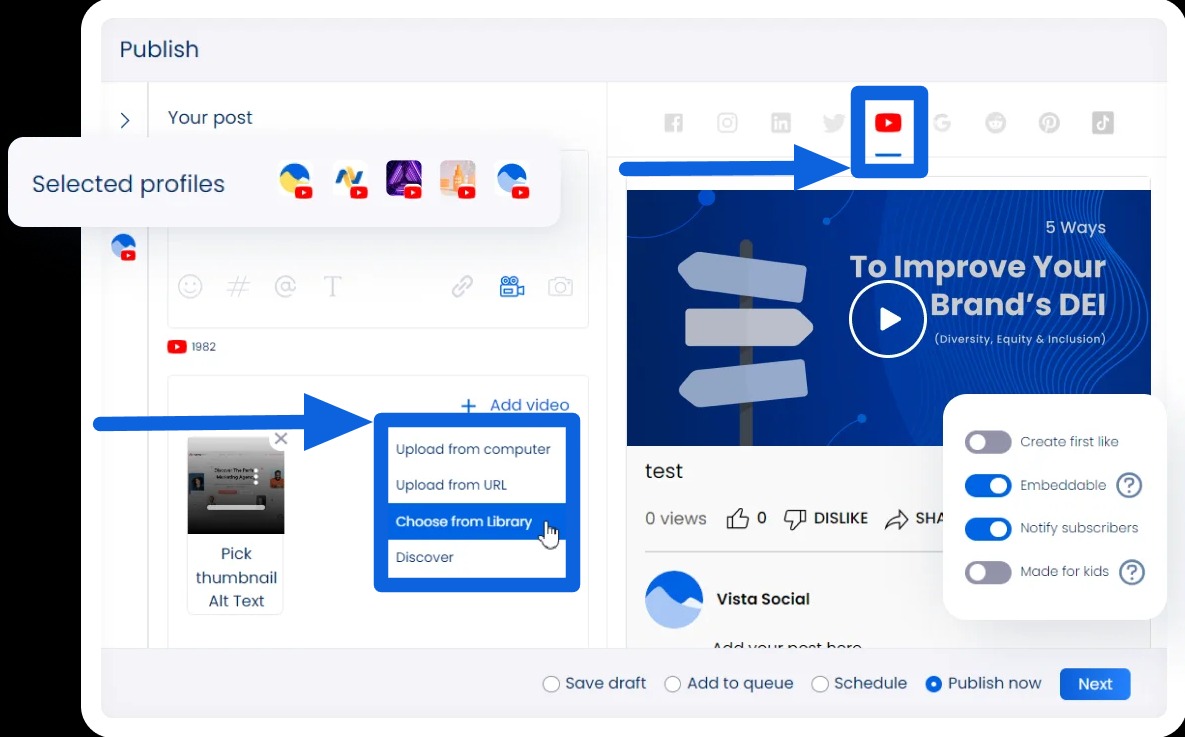
Add the #shorts hashtag to the video’s title and description.
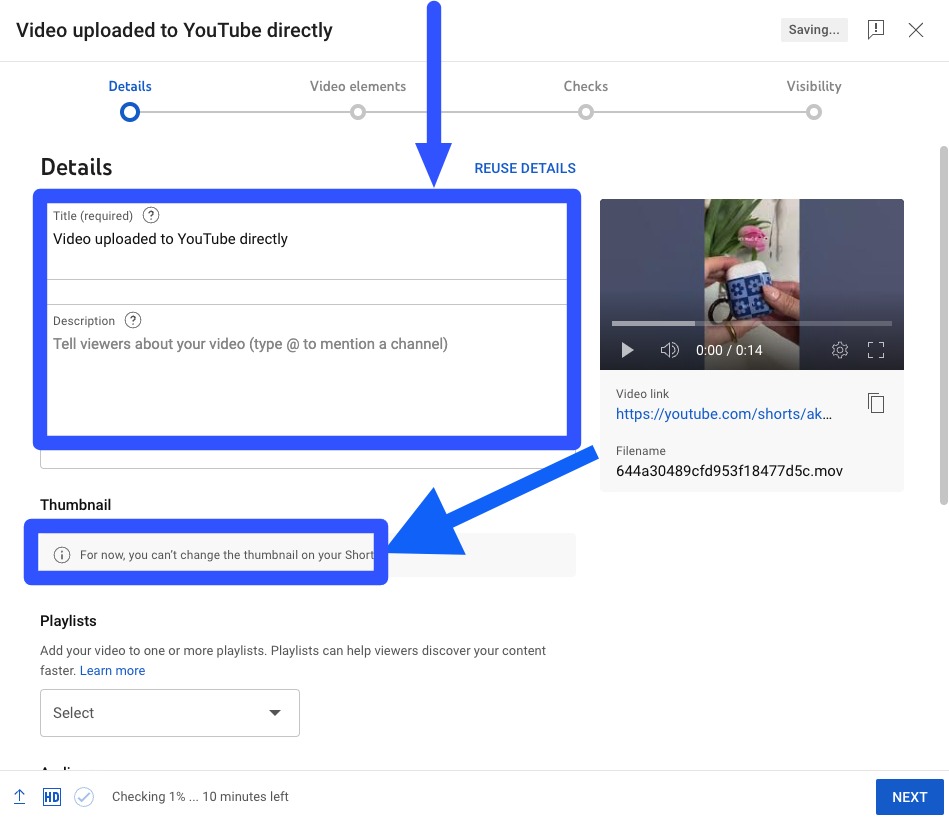
You can’t select custom thumbnails for your clients’ YouTube Shorts published through Vista Social due to the platform’s limitations.
However, you can unlock other YouTube options when you enable intermediate and advanced features.
You won’t need to manually post each of your clients’ YouTube Shorts and regular videos on their channels.
You can publish YouTube shorts using Vista Social immediately, set a posting schedule, add it to a queue, or bulk publish it with other content.
Whew! That’s a load of work taken right out of your busy hands.
Vista Social’s other YouTube management tools for business include the following:
- A collaborative content calendar that simplifies your YouTube content development and posting on your clients’ YouTube Brand Account. You can create YouTube drafts of your clients’ videos, apply audience targeting, and add tags to make finding and managing them easier.
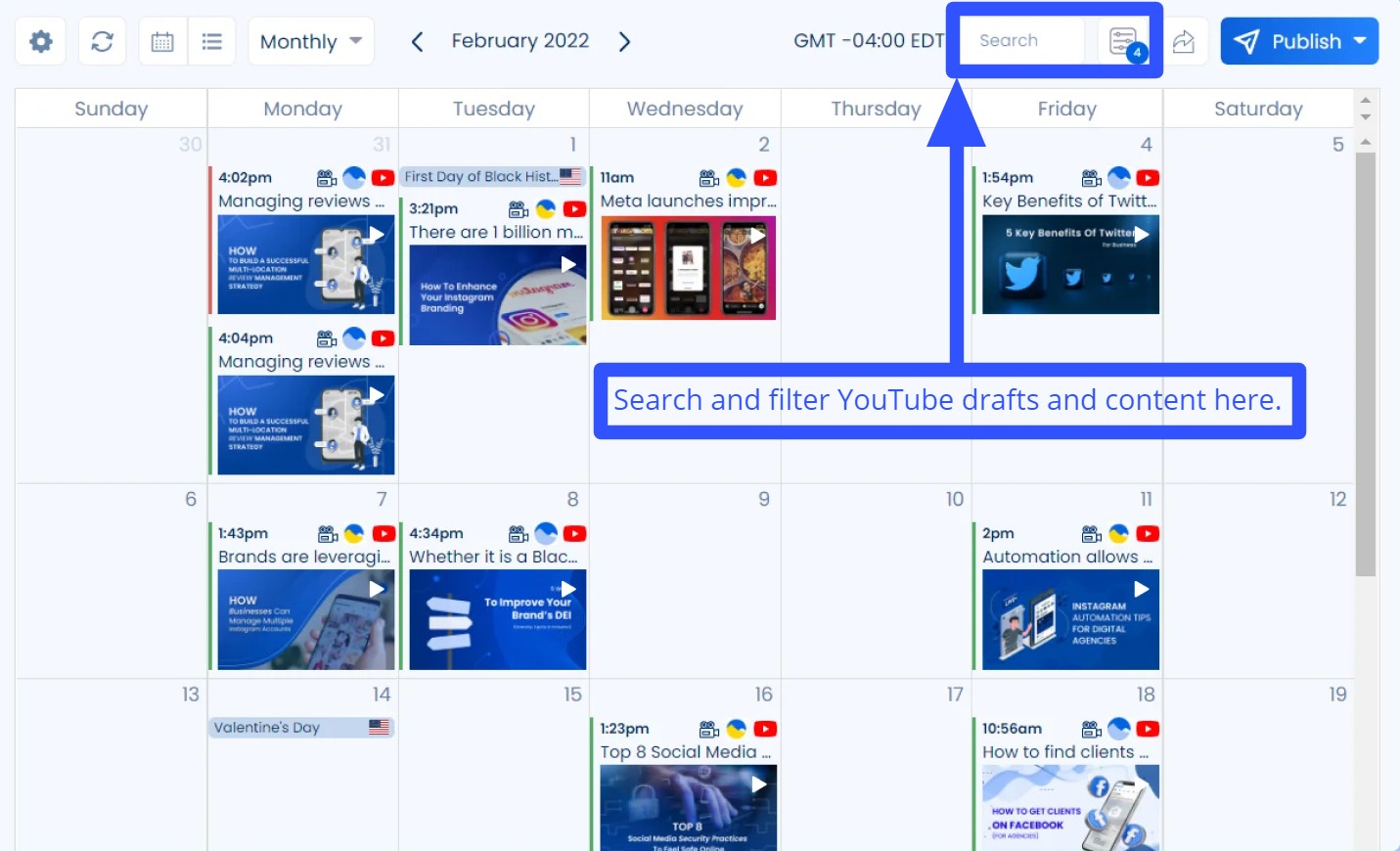
- Analytics and reporting features to track your clients’ content performance, including YouTube report definitions to help you understand the data.
- A social inbox to efficiently manage comments and subscribers to your clients’ channels so they don’t miss engagement opportunities.
- A YouTube video caption generator that can automatically create video captions for your clients’ posts in seconds.
- An approval workflow you can generate to guide processes, such as your content review, submission, and approval of messages. It helps you keep an eye on all your clients’ YouTube content and activities while simplifying collaboration and safeguarding their brand standards.
YouTube publishing with Vista Social is quick and hassle-free.
The platform makes managing all your clients’ social media content, profiles, and campaigns super easy.
Need to share a YouTube video on Instagram Story effortlessly? Vista Social’s got your back.
The platform gives you the complete toolkit to publish your clients’ YouTube Shorts and videos with ease while supercharging your social media management tasks.
Must read: [Mobile] How to publish YouTube shorts using Vista Social
People also ask
How do you get ten million views on YouTube Shorts?
Focus on providing high-quality content.
Quality content is at the core of successful YouTube Shorts.
Create Shorts that provide value through emotionally engaging, entertaining, or informative content.
In a nutshell, your clients need high-quality YouTube Shorts to reach 10 million views.
How much money can you earn for 1000 views on YouTube Shorts?
YouTube can pay up to three dollars per thousand views on YouTube Shorts.
However, the amount can vary depending on factors like the audience’s country of origin and the video’s content.
Can you monetize YouTube Shorts without reaching 1000 subscribers?
No, since the platform’s ad revenue-sharing program requires that YouTube creators have at least a thousand subscribers and ten million Shorts views within the past 90 days.
Anything below those numbers won’t likely allow get your clients earnings from their Shorts yet.
Get on the YouTube Shorts algorithm’s good side
While there is no one-size-fits-all formula to hacking the YouTube Shorts algorithm, there are time-tested strategies and tips you can use to run a successful marketing campaign.
Focus on creating enjoyable, engaging, emotionally captivating, and valuable content that gives your clients’ audiences a great viewing experience.
Remember, create YouTube Shorts for people and not the algorithm—while staying mindful of the algorithm’s quirks.
If people enjoy your clients’ videos, the algorithm can pick up on this and will give your videos a lot of love.
Make planning, creating, publishing, and managing your clients’ YouTube Shorts, feed videos, and other social media content hassle-free with Vista Social.
Try Vista Social for free to get a taste of how the platform works.
About the Author
Content Writer
Jimmy Rodela is a social media and content marketing consultant with over 9 years of experience, with work appearing on sites such as Business.com, Yahoo, SEMRush, and SearchEnginePeople. He specializes in social media, content marketing, SaaS, small business strategy, marketing automation, and content development.
Read with AI
Save time reading this article using your favorite AI tool
Summarize with AI
Never Miss a Trend
Our newsletter is packed with the hottest posts and latest news in social media.
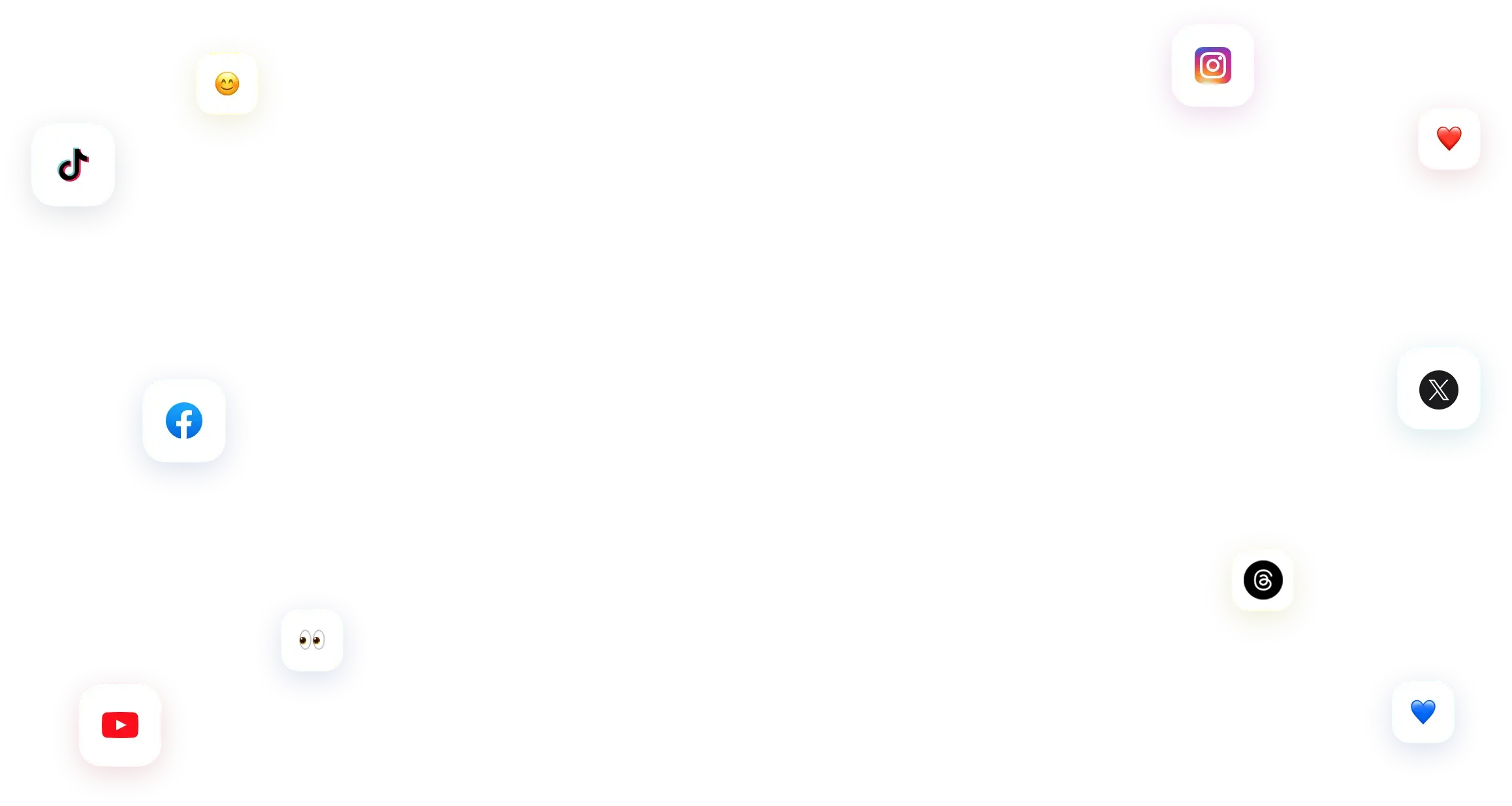
You have many things to do.
Let us help you with social media.
Use our free plan to build momentum for your social media presence.
Or skip ahead and try our paid plan to scale your social media efforts.
P.S. It will be a piece of cake 🍰 with Vista Social
Subscribe to our Newsletter!
To stay updated on the latest and greatest Social Media news. We promise not to spam you!
